The NVIDIA GeForce GTX 1080 & GTX 1070 Founders Editions Review: Kicking Off the FinFET Generation
by Ryan Smith on July 20, 2016 8:45 AM ESTNVIDIA Works: ANSEL & VRWorks Audio
Along with the various hardware aspects of Pascal, NVIDIA’s software teams have also been working on new projects to coincide with the Pascal launch. These are a new screenshot tool, and a new audio simulation package based on path traced audio.
We’ll start with NVIDIA’s new screenshot utility. Dubbed ANSEL, after famous American environmental photographer Ansel Adams, ANSEL is a very different take on screenshots. Rather than taking screenshots from the player’s perspective at the game rendering resolution, ANSEL allows for an entire scene to be captured at a far higher resolution than with standard screenshots. NVIDIA is pitching this as an art tool rather than a gaming tool, and I get the impression that this is one of those pie-in-the-sky kind of ideas that NVIDIA’s software group decided to run with in order to best show off Pascal’s various capabilities.
At its core, ANSEL is a means to decouple taking screenshot from the limitations of the player’s view. In an ANSEL-enabled application, ANSEL can freeze the state of the game, move the camera around, and then generate a copious amount of viewports to take screenshots. The end result is that ANSEL makes it possible to generate an ultra-high resolution 360 degree stereo 3D image of a game scene. The analogy NVIDIA is working towards is dropping a high quality 360 degree camera into a game, and letting users play with it as they see fit.
But even this isn’t really a great description of ANSEL, as there isn’t anything else like it to compare it to. Some games have offered 360 degree capture, but they haven’t done so at any kind of resolution approaching what ANSEL can do. And this still doesn’t touch features such as HDR (FP16) scene capture or the free camera.
Under the hood, ANSEL is at times a checklist for Pascal technologies (though it does work with Maxwell 2 as well). In order to capture scenes at a super high resolution, it forces a scene to its maximum LOD and breaks it down into a number of viewports, implemented efficiently using SMP. To demonstrate this technology NVIDIA put together a 4.5Gpix image rendered out of The Witcher 3, which was composed of 3600 such viewport tiles. Meanwhile stitching together the individual tiles is a CUDA based rendering process, which uses overlapping tiles to resolve any tone mapping conflicts. Finally, ANSEL captures images before they’re actually sent to a display, grabbing HDR images (in EXR format0 in games that support HDR.
Meanwhile given its level of deep interaction with games, ANSEL does require individual game support to work. This is in the form of a library provided by NVIDIA, which helps ANSEL and NVIDIA’s driver make sense of a scene and pause the simulation when necessary. Unsurprisingly, NVIDIA is eager to get ANSEL into more games – it just launched on Mirror’s Edge: Catalyst – and as a result is touting to developers that ANSEL is easy to implement, having taken only 150 lines of code on The Witcher 3.
Ultimately NVIDIA seems to be throwing ANSEL at the wall here to see what sticks. But it should be neat to see what users end up doing with the technology,
VRWorks Audio
Not to be outdone by the ANSEL team, other parts of NVIDIA’s software group has been working on a slightly different kind of project for NVIDIA: audio. As a GPU company, NVIDIA has never been deeply involved with audio (not since getting out of the chipset business, at least), but with the current focus on VR, they are taking a crack at it in a new way.
VRWorks Audio is the latest library as part of NVIDIA’s larger VRWorks suite. As given away by the name, this library is focused on audio, specifically for VR. In a nutshell, VRWorks is a full audio simulation library, using path tracing to power the simulation. The goal of VRWorks Audio is to provide a realistic sound simulation for VR, to further increase the apparent realism.
Under the hood, VRWorks audio leverages NVIDIA’s existing OptiX path tracing technology. Only rather than tracing light it’s used to trace sound waves. Along with simulating audio propagation itself – including occlusion and reverb – VRWorks Audio is also able to run the necessary Head Related Transfer Functions (HRTFs) to reduce the simulation down to binaural audio for headphones.
All of this is, of course, executed on Pascal’s CUs in a manner similar to path tracing or PhysX, running alongside the main graphics rendering thread. The amount of processing power required for VRWorks Audio can vary considerably depending on the detail desired (particularly the number of reflections); for NVIDIA’s VR Funhouse demo, VR Works audio can occupy most of a GPU on its own.
Ultimately, unlike some of the other technologies presented by NVIDIA, VRWorks Audio is in a relatively early stage. As a result while NVIDIA is shipping the SDK, there aren’t any games that are announced to be using it at this time, and if it gets any traction it’ll be farther into the future before we see the first games using it. That said, NVIDIA is already reaching out to the all-important middleware vendors on the subject, and to that end their own VR Funhouse demo is using FMOD with a VRWorks Audio plugin to handle the sound, demonstrating that they already have VRWorks Audio working with the popular audio middleware.



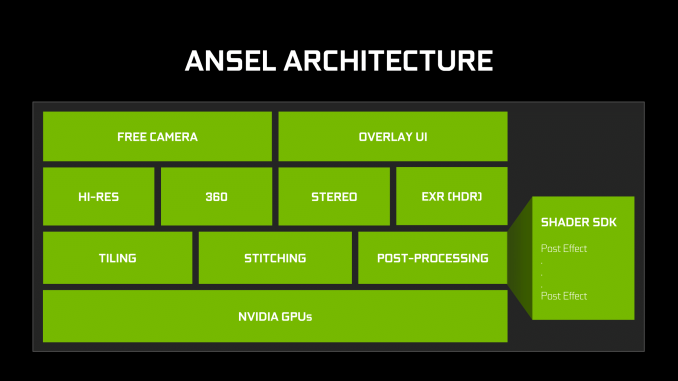
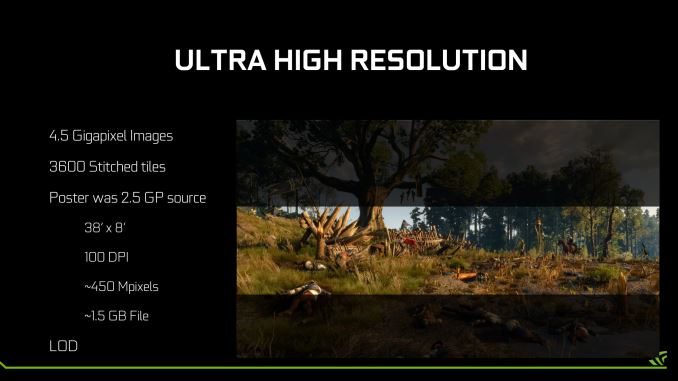
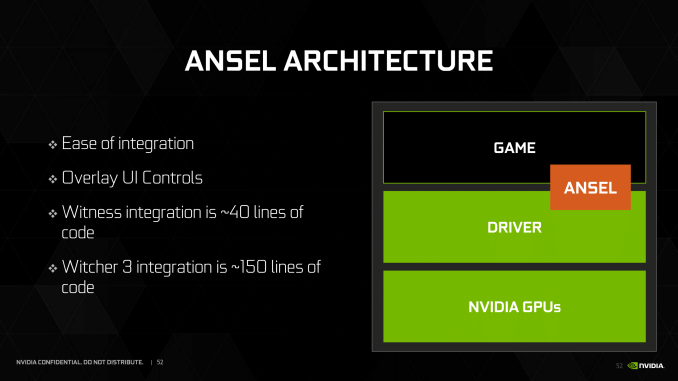
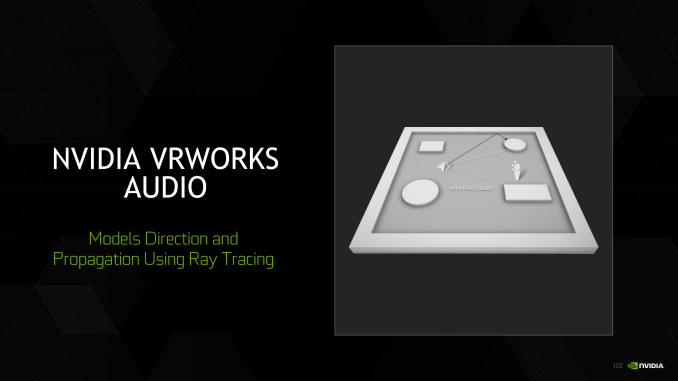
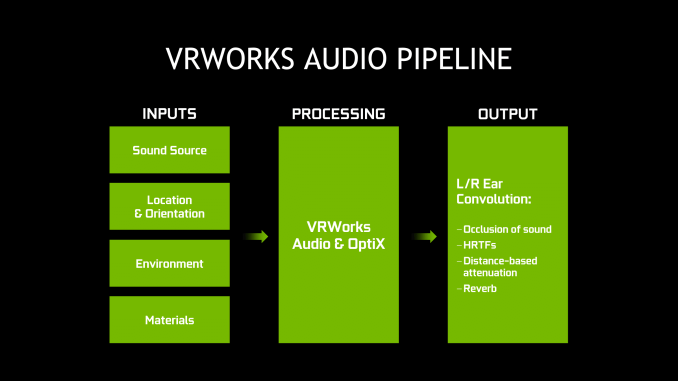








200 Comments
View All Comments
TestKing123 - Wednesday, July 20, 2016 - link
Then you're woefully behind the times since other sites can do this better. If you're not able to re-run a benchmark for a game with a pretty significant patch like Tomb Raider, or a high profile game like Doom with a significant performance patch like Vulcan that's been out for over a week, then you're workflow is flawed and this site won't stand a chance against the other crop. I'm pretty sure you're seeing this already if you have any sort of metrics tracking in place.TheinsanegamerN - Wednesday, July 20, 2016 - link
So question, if you started this article on may 14th, was their no time in the over 2 months to add one game to that benchmark list?nathanddrews - Wednesday, July 20, 2016 - link
Seems like an official addendum is necessary at some point. Doom on Vulkan is amazing. Dota 2 on Vulkan is great, too (and would be useful in reviews of low end to mainstream GPUs especially). Talos... not so much.Eden-K121D - Thursday, July 21, 2016 - link
Talos Principle was a proof of conceptajlueke - Friday, July 22, 2016 - link
http://www.pcgamer.com/doom-benchmarks-return-vulk...Addendum complete.
mczak - Wednesday, July 20, 2016 - link
The table with the native FP throughput rates isn't correct on page 5. Either it's in terms of flops, then gp104 fp16 would be 1:64. Or it's in terms of hw instruction throughput - then gp100 would be 1:1. (Interestingly, the sandra numbers for half-float are indeed 1:128 - suggesting it didn't make any use of fp16 packing at all.)Ryan Smith - Wednesday, July 20, 2016 - link
Ahh, right you are. I was going for the FLOPs rate, but wrote down the wrong value. Thanks!As for the Sandra numbers, they're not super precise. But it's an obvious indication of what's going on under the hood. When the same CUDA 7.5 code path gives you wildly different results on Pascal, then you know something has changed...
BurntMyBacon - Thursday, July 21, 2016 - link
Did nVidia somehow limit the ability to promote FP16 operations to FP32? If not, I don't see the point in creating such a slow performing FP16 mode in the first place. Why waste die space when an intelligent designer can just promote the commands to get normal speeds out of the chip anyways? Sure you miss out on speed doubling through packing, but that is still much better than the 1/128 (1/64) rate you get using the provided FP16 mode.Scali - Thursday, July 21, 2016 - link
I think they can just do that in the shader compiler. Any FP16 operation gets replaced by an FP32 one.Only reading from buffers and writing to buffers with FP16 content should remain FP16. Then again, if their driver is smart enough, it can even promote all buffers to FP32 as well (as long as the GPU is the only one accessing the data, the actual representation doesn't matter. Only when the CPU also accesses the data, does it actually need to be FP16).
owan - Wednesday, July 20, 2016 - link
Only 2 months late and published the day after a different major GPU release. What happened to this place?